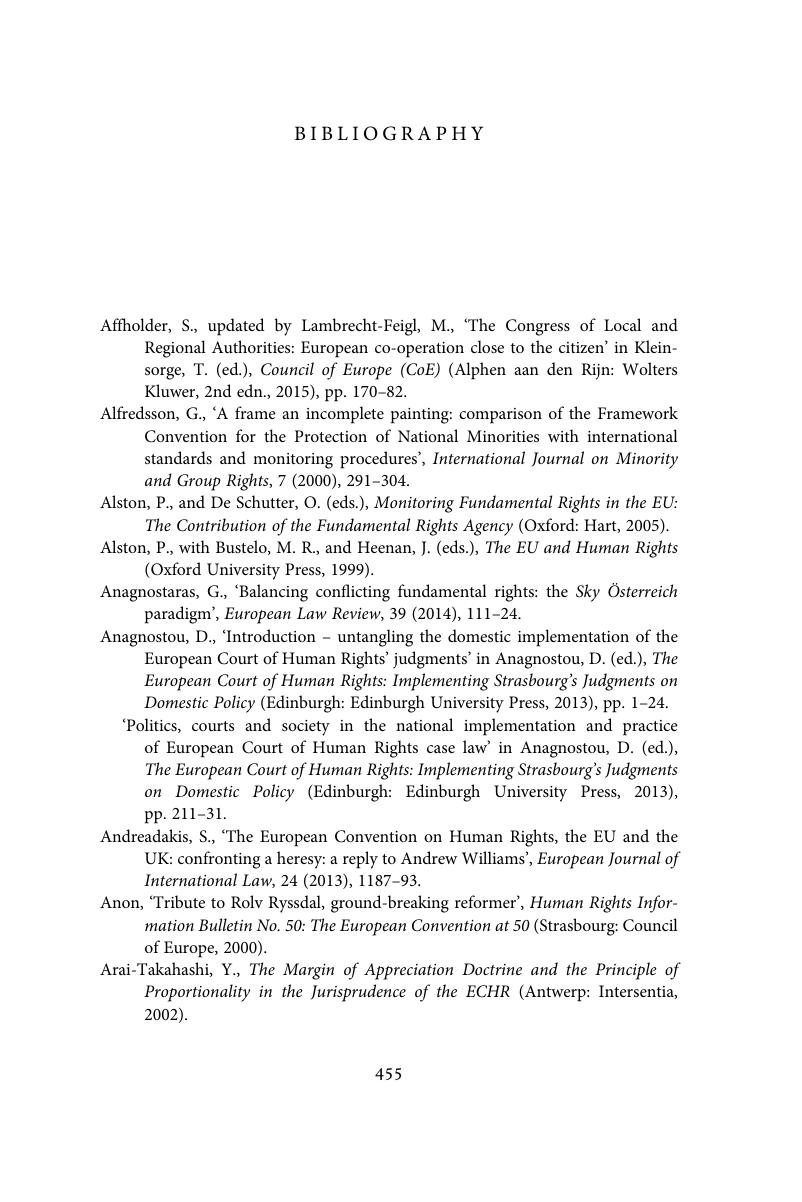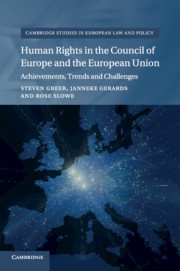Book contents
- Human Rights in the Council of Europe and the European Union
- Cambridge Studies in European Law and Policy
- Human Rights in the Council of Europe and the European Union
- Copyright page
- Dedication
- Contents
- Series Editors’ Preface
- Preface
- Abbreviations
- Table of Cases
- 1 Historical and Conceptual Background
- 2 The Council of Europe
- 3 The Case Law of the European Court of Human Rights
- 4 The European Union
- 5 The Fundamental Rights Jurisprudence of the European Court of Justice
- 6 Summary and Conclusion
- Book part
- Bibliography
- Index
- References
Bibliography
Published online by Cambridge University Press: 16 March 2018
- Human Rights in the Council of Europe and the European Union
- Cambridge Studies in European Law and Policy
- Human Rights in the Council of Europe and the European Union
- Copyright page
- Dedication
- Contents
- Series Editors’ Preface
- Preface
- Abbreviations
- Table of Cases
- 1 Historical and Conceptual Background
- 2 The Council of Europe
- 3 The Case Law of the European Court of Human Rights
- 4 The European Union
- 5 The Fundamental Rights Jurisprudence of the European Court of Justice
- 6 Summary and Conclusion
- Book part
- Bibliography
- Index
- References
Summary

- Type
- Chapter
- Information
- Human Rights in the Council of Europe and the European UnionAchievements, Trends and Challenges, pp. 455 - 490Publisher: Cambridge University PressPrint publication year: 2018



